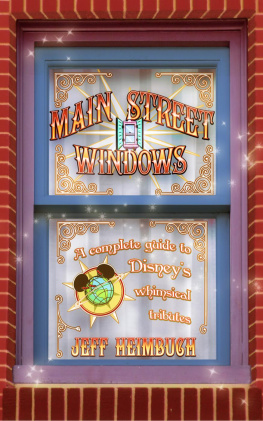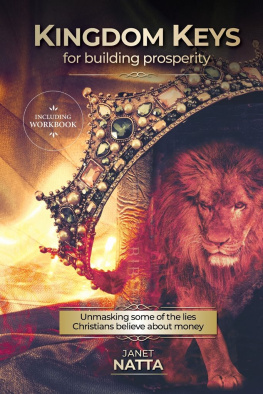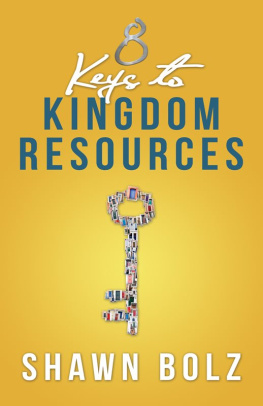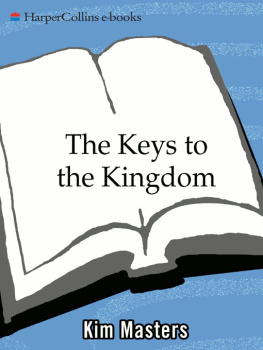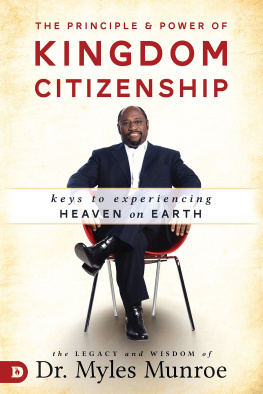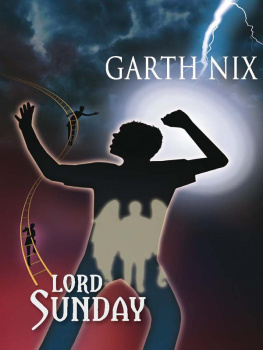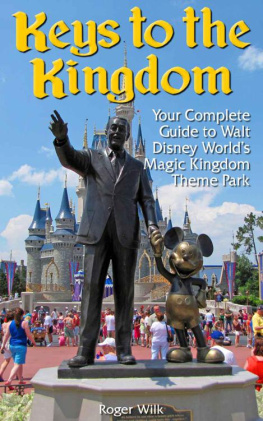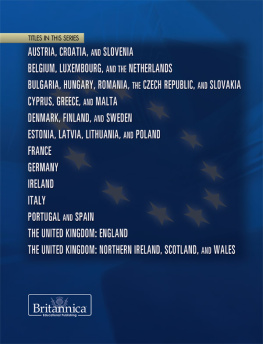Jeff Shear - The Keys to the Kingdom
Here you can read online Jeff Shear - The Keys to the Kingdom full text of the book (entire story) in english for free. Download pdf and epub, get meaning, cover and reviews about this ebook. year: 2013, genre: Politics. Description of the work, (preface) as well as reviews are available. Best literature library LitArk.com created for fans of good reading and offers a wide selection of genres:
Romance novel
Science fiction
Adventure
Detective
Science
History
Home and family
Prose
Art
Politics
Computer
Non-fiction
Religion
Business
Children
Humor
Choose a favorite category and find really read worthwhile books. Enjoy immersion in the world of imagination, feel the emotions of the characters or learn something new for yourself, make an fascinating discovery.

- Book:The Keys to the Kingdom
- Author:
- Genre:
- Year:2013
- Rating:3 / 5
- Favourites:Add to favourites
- Your mark:
- 60
- 1
- 2
- 3
- 4
- 5
The Keys to the Kingdom: summary, description and annotation
We offer to read an annotation, description, summary or preface (depends on what the author of the book "The Keys to the Kingdom" wrote himself). If you haven't found the necessary information about the book — write in the comments, we will try to find it.
The Keys to the Kingdom — read online for free the complete book (whole text) full work
Below is the text of the book, divided by pages. System saving the place of the last page read, allows you to conveniently read the book "The Keys to the Kingdom" online for free, without having to search again every time where you left off. Put a bookmark, and you can go to the page where you finished reading at any time.
Font size:
Interval:
Bookmark:
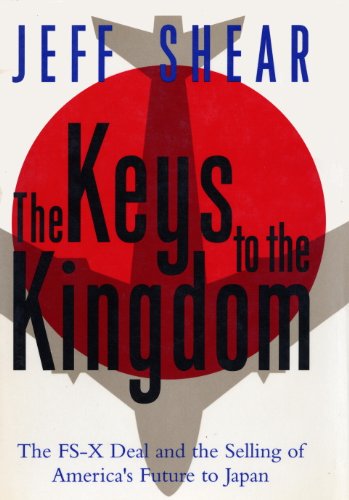
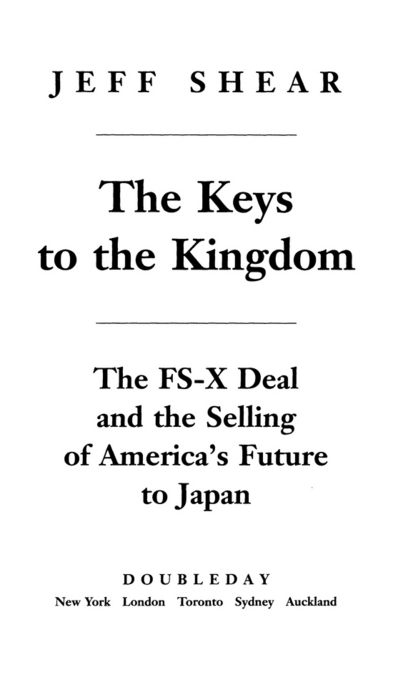

PUBLISHED BY DOUBLEDAY
a division of Bantam Doubleday Dell Publishing Group, Inc. 1540 Broadway, New York, New York 10036
D OUBLEDAY and the portrayal of an anchor with a dolphin are trademarks of Doubleday, a division of Bantam Doubleday Dell Publishing Group, Inc.
Library of Congress Cataloging-in-Publication Data
Shear, Jeff.
The keys to the kingdom: the FS-X deal and the selling of Americas future to Japan/Jeff Shear,
p. cm.
1. Technology transferGovernment policyUnited States. 2. FS-X (Jet fighter plane) 3. Aircraft industryUnited StatesTechnological innovations. 4. Aircraft industryJapan. 5. United StatesForeign economic relationsJapan. 6. JapanForeign economic relationsUnited States. I. Title.
HC110.T4S53 1994
338.9173052dc20 93-47228
eISBN: 978-0-307-83220-7
Copyright 1994 by Jeff Shear
All Rights Reserved
v3.1
To my wife, Bonnie, and my daughter, Zo

Contents

Prologue:
February 24, 1989
I N THE DARK DEEP MOAT that guarded the sacred grounds of the Imperial Palace, the overfed carp swam aimlessly, like torpedoes that have missed their mark. Cold pellets of rain raked the waters of the swarthy channel, and the wet black boulders of the steep palace walls loomed forbiddingly against the silent throng below. The Emperor of Japan was dead. His mourners, nearly 300,000 strong, stood in a somber mass in the icy rain.
At the state ceremonies held at the 148-acre Shinjuku Gyoen Imperial Gardens, an unprecedented 10,000 official mourners from 164 nations were present. Never before in the 20th century, wrote Time magazine, had such a large and distinguished assemblage of dignitaries convened for a funeral. Chief among these luminaries was the American President, George Bush, a man who had almost died fighting the Imperial forces of Hirohito forty-four years earlier.
Hirohitos death coincided with a momentous shift in Japanese-American cooperation. The roles that had defined the relationship between the United States and Japan since August 1945conqueror and vanquished, protector and ward, patron and loyal allywere no longer clearly delineated, irrevocably altered by the emergence of Japan as an economic superpower. Indeed, the President had not come to Tokyo merely to attend the funeral of the Emperor; he had business to discuss, a deal that had negotiators on both sides wondering whether Japan was Americas strongest ally or its most formidable competitor. Bushs presence signaled the passing not only of a man but of an era.

Taken from his seventeen-year-old mother when he was three months old, the late Emperor had been allowed no friends and no games when growing up. His marriage was arranged. His own children were reared in separate residences. None could look directly upon him. Raised to be a god, he died as a mortal at age eighty-seven, from a stomach cancer that his doctors never revealed to him.
When the fifty-one pallbearers hoisted Hirohitos 1.5-ton coffin and palanquin toward its final resting place, Japanese mourners lowered their umbrellas out of respect, baring their bowed heads to the pelting storm. As the funeral cortege inched slowly forward, flutes were heard, filling the sodden air with a gentle dirge of lamentation. Shinto priests made their offerings: silk brocade, rice, twenty quail, three lotus roots, bream, and other sacramental objects. Hirohitos reign had been named Showa, meaning enlightened peace. Now the Emperor Showa was buried with his sword, ceremonial shoes, spectacles, and several of the books he had written on marine biology; the gods mortal pursuit was jellyfish.
Hirohito was said to have been the 124th Emperor in an unbroken 2,600-year-old dynastic line. Almost a fifth of the Japanese people still regarded the Emperor as their deity.
The Emperor Showas successor, Crown Prince Akihito, was a different kind of man, a modern Japanese. One waggish Japan scholar called him the first salaryman Emperor, a businessman of a god. Unlike any of his predecessors, he began his education under an American tutor, a Quaker woman named Elizabeth Vining, who taught him: Think for yourself, live like a regular person. Akihito grew up and married a commoner, for love. He sent his eldest son, the crown prince, to study at Oxford, where the young man kept a pinup of Brooke Shields in his apartment.
Akihitos ascension to the Chrysanthemum Throne ushered in a new era, Heisei, meaning achievement of peace. And in peace the whole world had come to Tokyo. By itself, this fact was millennial. As the year 2000 approached, the Japanese sense of national identity was changing; the viewpoint of a small inward-looking island nation was giving way to the vision of one of the most powerful players in the global marketplace. The second-largest economy on the planet stood on the verge of assuming responsibility for its economic miracle: providing for its own security, taking a leadership role in international affairs, joining in a common defense against tyranny. As a practical matter, there was an honored permanent seat on the United Nations Security Council to be considered.
For the United States, this was also a period of great transition. The forty-five-year period of relentless hostility toward the Soviet bloc was drawing to a close, and with the Cold Wars demise the certitudes of American confidence and supremacy were crumbling. Increasingly, the men and women paid to think about threats to American well-being studied not the military might of the Soviet Union but the economic might of Japan, Inc. Yet George Bushscion of a wealthy and powerful New England family, World War II hero, Ivy League graduate, Texas wildcatter, CIA Director, Vice President under Ronald Reagan, the fiercest Cold Warrior of them allwas a man much more of Hirohitos world than of Akihitos. Their Japan was Americas protg, its disciple in Democracy, its student in Capitalism.
A symbol of the new era for both countries had already begun to emerge from the drawing boards of one of the nations oldest and greatest corporations, Mitsubishi Heavy Industries. Here, taking shape, was a plane some in Japan referred to as the Heisei Zero, linking the name of the new imperium with the memory of the legendary Showa fighter of World War II. This plane was to be a symbol of Japans leadership in the world of technology. The wings were to be made of plasticcarbon composites actually, the stuff used to make tennis rackets light and strong. Pilots would fly it like a Nintendo toy, manipulating a joystick connected to a computer program that activated its control surfaceselevators, ailerons, rudders. According to Japanese analysts, this allowed the plane to practically turn flat, almost like a compass needle. The Japanese called it the FS-X, for Fighter Support Experimental.
The tailpipe of a fighter plane is its Achilles heel. Its kill spot. Check six, fighter pilots signal each other over their radios: Make sure the enemy isnt in the six oclock position, on your tail. This is where the FS-X, the Japanese claimed, would prove its advantage. The plane would be able to virtually wheel on its foe, like a tank turret, protecting its rear and firing its weapons head-on. On a bombing run, it would be able to hop left or right to get a better line on its target. The Heisei fighter was to be the embodiment of the new Japan: state of the art; the highest in high technology; the best in the world.
Font size:
Interval:
Bookmark:
Similar books «The Keys to the Kingdom»
Look at similar books to The Keys to the Kingdom. We have selected literature similar in name and meaning in the hope of providing readers with more options to find new, interesting, not yet read works.
Discussion, reviews of the book The Keys to the Kingdom and just readers' own opinions. Leave your comments, write what you think about the work, its meaning or the main characters. Specify what exactly you liked and what you didn't like, and why you think so.

